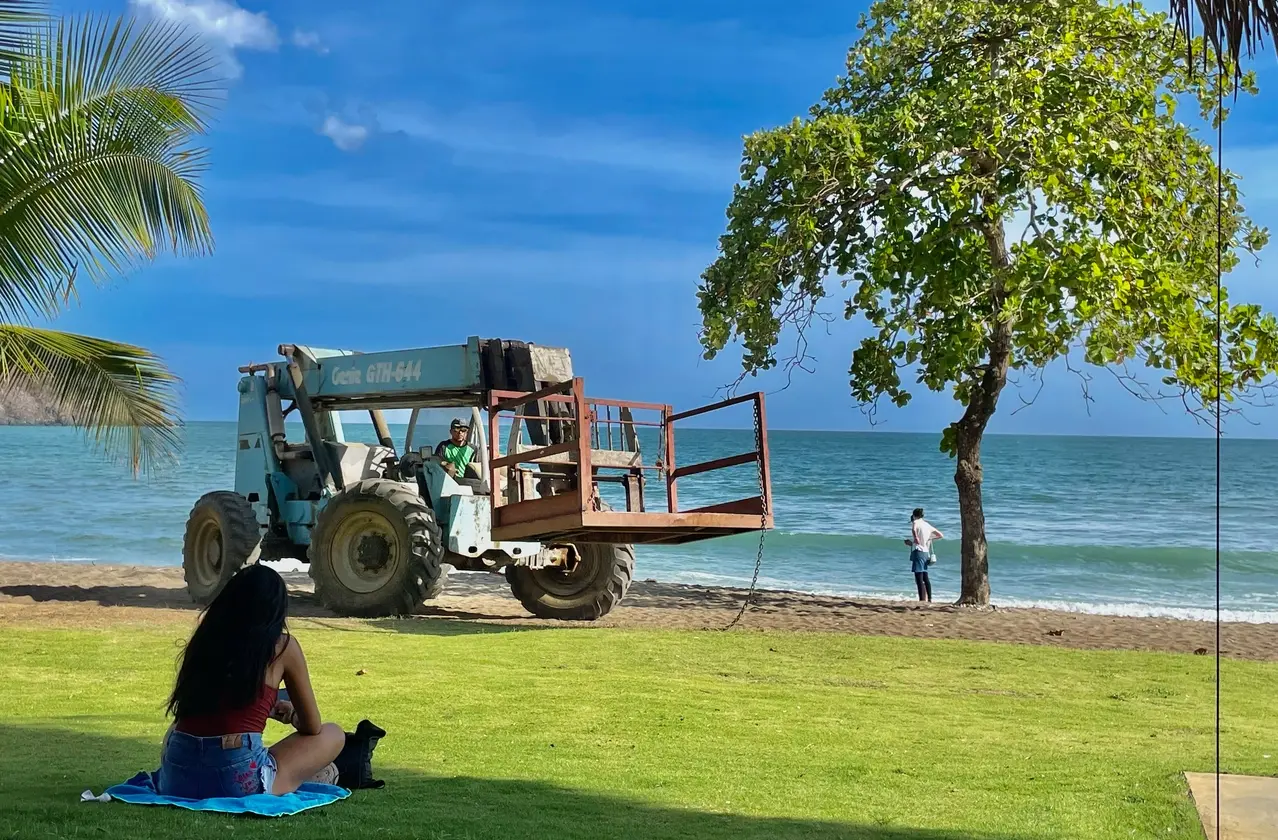Playa Venao, Panama — Just a little more than a decade ago, Ángely Miranda would drive to the pristine, horseshoe-shaped bay of Playa Venao for asados, a traditional South American barbecue for family and friends. Back then, the road was entirely unpaved, but those bumpy, rugged journeys are some of Miranda’s most joyful memories of growing up along Panama’s Pacific coast.
A lot has changed since then, for the beach, the community that surrounds it and an entire region that is being rapidly transformed. Massive infusions of capital from the U.S., Israel and European nations have made Central America a magnet for tourist getaways or plush, tropical retirements. But there are larger stakes at play, for the global environment and native lifestyles, on the one hand, and for the economic transformation of developing nations on the other.
That balancing act has Panama teetering between economic boom and environmental and cultural disaster. Playa Venao, the point where jungle meets ocean, is also where rapid development meets its more challenging consequences. “I used to walk on the beach, just go to the water and drink sometimes,” Miranda told me, using a mix of Spanish and English. “I used to come with a lot of people. We used to grill, and it was really fun.”
Now, Miranda’s favorite beach is unrecognizable. Playa Venao of today has hotels lining the shore, mansions nestled on the hilltops and a vibrant downtown strip boasting trendy shops fashioned from repurposed Evergreen shipping containers. Miranda herself works as a receptionist at Selina, one of the biggest hotels.
Like Miranda, most longtime residents of Playa Venao see the development as a mixed blessing, a welcome source of jobs, on the one hand, and a destruction of a way of life on the other. But to ecologists and environmentalists, the widespread destruction of plant life and the rise of energy-consuming luxury towers are unambiguous sources of concern, because environmentally sensitive development in the southern hemisphere is widely considered a key to containing and mitigating the consequences of global warming.
“Migration is accelerating under a changing climate,” Mark Wishnie, the former director of the Smithsonian Tropical Research Institute’s Native Species Reforestation Project, said. “As a result, the ability for Panama to serve as a corridor for species movement in a warming climate is, of course, only more and more important.”
Complicating the situation is the fact that growth and development are widely seen as the physical manifestation of the country’s rising position on the world stage. Panama’s stable transition to democracy and robust economy, the fastest growing in Latin America, have attracted droves of investors. U.S. Foreign Direct Investment in Panama was 5.3 billion in 2019, a 3.9 percent increase from 2018. These investors even enjoy special protections under the 2012 U.S.-Panama Trade Promotion Agreement.
“Because of the history in Panama, the Noriega regime, the invasion, etc., people weren’t comfortable investing in Panama,” Wishnie said. “But that clearly has changed.”
Since 2020, Panama has focused on spreading this investment outwards from Panama City, and this year the government began a $240 million highway project to the rural Darién province. Moves such as these stimulate rural economies, but also come with an environmental cost. Panama has the highest forest cover of any country in Central America. However, since 2000, Panama has lost 8.5 percent of those trees and in 2022 alone, 67 square miles of land was deforested.

